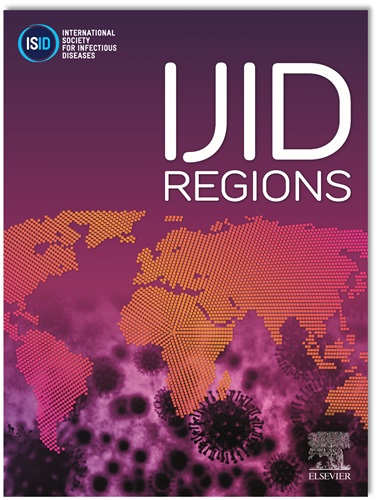Risk of severe bacterial infections including TB before and after immediate or deferred antiretroviral therapy: A multicenter, prospective, cohort study
IF 4.8
2区 医学
Q1 INFECTIOUS DISEASES
引用次数: 0
Abstract
Objectives
Deferring antiretroviral therapy (ART) until a CD4 count below cells/mm3 or other clinical indication in people with HIV (PWH) carries an increased risk of severe bacterial infections and tuberculosis (TB). It is not known if this increased risk is reversed after ART initiation.
Methods
We analyzed 4684 adult PWH with CD4 cell counts above 500 cells/mm3 who were randomized to immediate or deferred ART in the Strategic Timing of AntiRetrovial Treatment trial. In May 2015, the deferred group was offered ART and follow-up continued until December 2021. Cox proportional hazards models were used to compare the risks of severe bacterial infections including TB in the immediate and deferred groups before and after ART initiation in the deferred group.
Results
A total of 217 (4.6%) participants experienced a severe bacterial infection during the entire follow-up period. Pre-2016, the immediate group had a lower rate of severe bacterial infections compared to the deferred group (hazard ratio [HR] 0.38; 95% CI 0.26, 0.55). During 2016-2021, there was no longer a statistically significant difference (HR 0.75; 95% CI 0.49, 1.16). No differences were observed between clinical or demographic subgroups.
Conclusion
The increased risk of severe bacterial infections seen after deferring ART is reversed once ART is initiated.
立即或延迟抗逆转录病毒治疗前后包括结核病在内的严重细菌感染的风险:一项多中心、前瞻性队列研究
目的:推迟抗逆转录病毒治疗,直到CD4细胞计数低于细胞/mm3或其他临床适应症,HIV感染者(PWH)发生严重细菌感染和结核病(TB)的风险增加。目前尚不清楚抗逆转录病毒治疗开始后这种增加的风险是否会逆转。方法:我们分析了4,684名CD4细胞计数高于500细胞/mm3的成年PWH患者,他们在抗逆转录病毒治疗的策略时机(START)试验中随机分为立即或延迟ART组。2015年5月,延期组接受抗逆转录病毒治疗,随访持续到2021年12月。采用Cox比例风险模型比较立即和延迟治疗组在延迟治疗组开始抗逆转录病毒治疗前后发生严重细菌感染(包括结核病)的风险。结果:217名(4.6%)参与者在整个随访期间经历了严重的细菌感染。2016年之前,与延迟治疗组相比,立即治疗组的严重细菌感染率较低(HR 0.38;95% ci 0.26, 0.55)。在2016-2021年期间,不再有统计学显著差异(HR 0.75;95% ci 0.49, 1.16)。临床或人口亚组之间没有观察到差异。结论:推迟抗逆转录病毒治疗后出现的严重细菌感染风险增加一旦开始抗逆转录病毒治疗就会逆转。
本文章由计算机程序翻译,如有差异,请以英文原文为准。
求助全文
约1分钟内获得全文
求助全文
来源期刊
CiteScore
18.90
自引率
2.40%
发文量
1020
审稿时长
30 days
期刊介绍:
International Journal of Infectious Diseases (IJID)
Publisher: International Society for Infectious Diseases
Publication Frequency: Monthly
Type: Peer-reviewed, Open Access
Scope:
Publishes original clinical and laboratory-based research.
Reports clinical trials, reviews, and some case reports.
Focuses on epidemiology, clinical diagnosis, treatment, and control of infectious diseases.
Emphasizes diseases common in under-resourced countries.

 求助内容:
求助内容: 应助结果提醒方式:
应助结果提醒方式:


